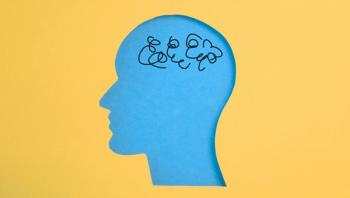
- Vol 42, Issue 10
Tardive Dyskinesia in Older Adults: Identification and Management in Long-Term Care Settings
Key Takeaways
- Tardive dyskinesia (TD) arises from prolonged dopamine receptor-blocking agent use, with older adults being particularly susceptible due to age-related factors and polypharmacy.
- Timely recognition and treatment of TD are critical to prevent progression and optimize outcomes, with VMAT2 inhibitors being effective therapeutic options.
Tardive dyskinesia significantly impacts older adults in long-term care, necessitating timely recognition and effective treatment strategies for improved quality of life.
SPECIAL REPORT: GERIATRIC PSYCHIATRY PART 2
Tardive dyskinesia (TD) is an often overlooked yet significant movement disorder in older adults, especially those in long-term care (LTC) settings.1 Characterized by involuntary, repetitive movements, TD typically arises after prolonged use of dopamine receptor–blocking agents (DRBAs), such as antipsychotics or gastrointestinal medications.2 As psychiatric and neurodegenerative conditions frequently require antipsychotic use, psychiatrists and mental health clinicians must be aware of the increased risk, burden, and updated treatment strategies for TD in older populations. With the aging population increasing and antipsychotic prescriptions continuing,3 it is more important than ever to recognize and address TD effectively. Prevalence estimates vary, but findings from studies in routine clinical care environments suggest TD is underrecognized and undertreated.4
Case Vignette
“Mrs Jones,” a 78-year-old nursing home resident with dementia-related behavioral symptoms, had been receiving low-dose risperidone 1 mg for over a year. Over the past few months, caregivers noticed repetitive lip smacking and tongue movements interfering with her eating and social engagement. An Abnormal Involuntary Movement Scale (AIMS) assessment confirmed moderate TD. A review of her medications and initiation of a vesicular monoamine transporter 2 (VMAT2) inhibitor significantly improved her symptoms and quality of life. Mrs Jones’ case highlights the importance of timely recognition and treatment of TD to preserve independence and dignity in LTC residents.
Understanding TD in Older Adults
TD results from chronic exposure to DRBAs.2 Although the risk exists for all age groups, older adults are particularly vulnerable (
The pathophysiology of TD is not fully understood, but the most widely accepted hypothesis involves dopaminergic hypersensitivity resulting from prolonged dopamine D2 receptor blockade.2 This neuroadaptation disrupts the balance of motor control in the basal ganglia, resulting in involuntary movements. Importantly, the development of TD does not always correlate with high doses or long durations of DRBA exposure; older adults may develop TD after just a few weeks of low-dose therapy.9 Common symptoms of TD can be found in
Recognition and Diagnosis
Timely identification of TD is critical to prevent progression and optimize treatment outcomes.5 However, TD can be mistaken for other DRBA-induced movement disorders such as dystonia, akathisia, and drug-induced parkinsonism (DIP).10 Each condition has distinct onset and features:
- TD develops after months or years of DRBA use. Movements are involuntary and repetitive, often choreiform or athetoid.
- Dystonia has acute onset. Sustained muscle contractions cause twisting or abnormal postures.
- Akathisia involves restlessness, pacing, and inability to sit still. It typically occurs within the first few weeks of antipsychotic initiation.
- DIP involves rigidity, bradykinesia, and tremors. It is often mistaken for Parkinson disease and appears within weeks of DRBA exposure.
The gold standard for TD screening in clinical practice is the AIMS.5,10 The Minimum Data Set guidelines mandate baseline and quarterly AIMS assessments for residents on antipsychotics in LTC settings.7 However, these assessments should continue for 6 to 8 weeks after antipsychotic discontinuation to identify delayed symptom emergence.2 AIMS is a 12-item scale evaluating movements in multiple body regions and includes questions about patient awareness and dental status. All LTC staff, including nurses and aides, should be trained to observe subtle abnormal movements and report them promptly for further evaluation
Impact on Older Adults
The consequences of TD are particularly significant for older adults, as the disorder affects not only physical function but also emotional and psychosocial well-being.11 In LTC environments, residents with TD often become socially withdrawn due to embarrassment over their involuntary movements. This isolation can worsen underlying psychiatric symptoms, contribute to depression, and reduce engagement in therapeutic and recreational activities.11,12 Findings from clinical studies have identified correlations between symptom severity, psychiatric comorbidities, and quality of life.13
Physically, TD can impair essential daily functions.5,6 Orofacial dyskinesia may lead to difficulty chewing and swallowing, increasing the risk of malnutrition, weight loss, and aspiration pneumonia.2,12 Limb dyskinesias may interfere with grooming, dressing, and mobility, heightening the risk of falls and fractures.12 Moreover, dyskinesias in the trunk and respiratory system can cause breathing difficulties and vocal disruptions.2
Treatment Strategies
What Not to Do
- Avoid dose reduction alone: Reducing or stopping antipsychotics may unmask or worsen TD symptoms and could lead to psychiatric relapses.2
- Avoid anticholinergics: These medications are ineffective for TD and can increase confusion, falls, and urinary retention in older adults.7
What to Do
- VMAT2 Inhibitors: Valbenazine and deutetrabenazine are FDA approved for treating TD.14,15 They reduce abnormal dopamine release by inhibiting VMAT2.
- Valbenazine (Ingrezza): This medication requires no dosage adjustment in older patients or those with renal impairment and is available in sprinkle form for patients with swallowing difficulty.14 The contents of the capsule can also be crushed and added to soft foods or administered via a gastrostomy tube without compromising stability or delivery, as demonstrated in findings from an administration feasibility study.16
- Deutetrabenazine (Austedo): Caution is advised in older patients. It is contraindicated in hepatic impairment and must be swallowed whole.15
These administration options may improve adherence and comfort in older adults with swallowing difficulties or feeding tubes. Treatment decisions should also consider patient preference, degree of functional impairment, and psychosocial impact.11
Nonpharmacologic Measures
Although VMAT2 inhibitors have transformed the management landscape, nonpharmacologic strategies remain essential in addressing the broader effects of TD.2 Options include:
- Care coordination: Regular interdisciplinary meetings can ensure consistent monitoring and care planning.
- Behavioral interventions: Encouraging participation in activities, offering emotional support, and reducing isolation can improve outcomes.11
- Nutritional and speech therapy: For patients with orofacial involvement, specialist interventions may prevent complications such as weight loss or aspiration.2
Concluding Thoughts
TD in older adults is a multifaceted disorder with profound implications for health, autonomy, and quality of life. For clinicians working in LTC settings, it is vital to integrate regular screening protocols, educate staff, and implement evidence-based treatments.2,5,11 A proactive, multidisciplinary approach will ensure timely intervention and compassionate care for this vulnerable population. Looking forward, ongoing research into nondopaminergic therapies, better risk stratification tools, and policy reforms aimed at reducing inappropriate antipsychotic use will further enhance our ability to prevent and manage TD.2 Innovative neuromodulation therapies, such as vagus nerve stimulation, have shown promise in other neurological disorders and may warrant future exploration for TD.17
Dr Patel is an adult and geriatric psychiatrist in private practice.
References
1. Diagnostic and Statistical Manual of Mental Disorders, Fifth Edition. American Psychiatric Association; 2013.
2. Waln O, Jankovic J.
3. Alexander GC, Gallagher SA, Mascola A, et al.
4. Loughlin AM, Lin N, Abler V, Carroll B.
5. Citrome L, Isaacson SH, Larson D, Kremens D.
6. Jeste DV.
7. 2023 American Geriatrics Society Beers Criteria Update Expert Panel. American Geriatrics Society 2023 updated AGS Beers Criteria for potentially inappropriate medication use in older adults. J Am Geriatric Soc. 2023;71(7):2052-2081.
8. Correll CU, Leucht S, Kane JM.
9. Woods SW, Morgenstern H, Saksa JR, et al.
10. Hauser RA, Meyer JM, Factor SA, et al.
11. Patel A, Whitt T.
12. Caroff SN, Leong SH, Roberts C, et al.
13. Miller DD, McEvoy JP, Davis SM, et al.
14. Ingrezza. Prescribing information. Neurocrine Biosciences; 2025. Accessed August 1, 2025.
15. Austedo. Prescribing information. Teva Pharmaceuticals; 2025. Accessed August 1, 2025.
16. Sajatovic M, Patel A, Hebert M, et al. Crushing the contents of valbenazine capsules for potential addition to soft foods or administration via gastrostomy tube. Clin Ther. 2023;45(12):1222-1227.
17. Morris GL 3rd, Gloss D, Buchhalter J, et al.
Articles in this issue
about 2 months ago
A Critical Catch: Catatonia Due to Multiple General Medical Conditionsabout 2 months ago
Rights and Risks in Geriatric Capacity Assessmentabout 2 months ago
Insomnia in Older Adults: A Holistic Approachabout 2 months ago
Precision Diagnosis: The New Paradigm for Neurocognitive Disordersabout 2 months ago
Can the Initial Antipsychotic Influence Years of Weight Gain?about 2 months ago
Dr Max Fink, Farewell and Thank Youabout 2 months ago
The Use of Aripiprazole for Bipolar Disorderabout 2 months ago
The HarvestNewsletter
Receive trusted psychiatric news, expert analysis, and clinical insights — subscribe today to support your practice and your patients.











